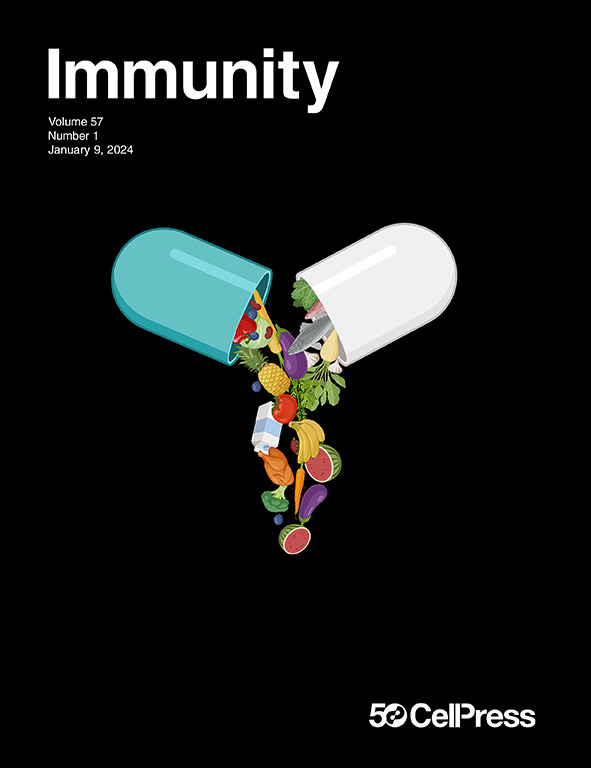神经和气道相关的间质巨噬细胞通过I型干扰素信号通路减轻SARS-CoV-2的发病机制
IF 26.3
1区 医学
Q1 IMMUNOLOGY
引用次数: 0
摘要
尽管有疫苗,但迅速变异的病毒,如严重急性呼吸综合征冠状病毒2 (SARS-CoV-2),由于免疫调节途径受损和免疫反应过度活跃,继续威胁着人类健康。我们对组织驻留巨噬细胞在SARS-CoV-2感染期间保护宿主免受过度炎症的局部免疫机制的了解仍然有限。在这里,我们发现神经和气道相关的间质巨噬细胞(NAMs)是控制小鼠适应性SARS-CoV-2 (MA-10)感染所必需的。对照组小鼠限制了肺部病毒分布并存活,而NAM耗竭增强了病毒传播和炎症并导致100%的死亡率。从机制上讲,NAMs发出的I型干扰素受体(IFNAR)信号对于限制炎症和病毒传播至关重要,CD169+巨噬细胞中IFNAR缺乏反映了NAMs缺失的结果,并消除了它们的扩张。这些发现强调了NAMs在调节病毒传播和炎症中的重要保护作用,为SARS-CoV-2的发病机制提供了新的见解,并强调了NAMs在介导宿主免疫和疾病耐受方面的重要性。本文章由计算机程序翻译,如有差异,请以英文原文为准。

Nerve- and airway-associated interstitial macrophages mitigate SARS-CoV-2 pathogenesis via type I interferon signaling
Despite vaccines, rapidly mutating viruses such as severe acute respiratory syndrome coronavirus 2 (SARS-CoV-2) continue to threaten human health due to an impaired immunoregulatory pathway and a hyperactive immune response. Our understanding of the local immune mechanisms used by tissue-resident macrophages to safeguard the host from excessive inflammation during SARS-CoV-2 infection remains limited. Here, we found that nerve- and airway-associated interstitial macrophages (NAMs) are required to control mouse-adapted SARS-CoV-2 (MA-10) infection. Control mice restricted lung viral distribution and survived infection, whereas NAM depletion enhanced viral spread and inflammation and led to 100% mortality. Mechanistically, type I interferon receptor (IFNAR) signaling by NAMs was critical for limiting inflammation and viral spread, and IFNAR deficiency in CD169+ macrophages mirrored NAM-depleted outcomes and abrogated their expansion. These findings highlight the essential protective role of NAMs in regulating viral spread and inflammation, offering insights into SARS-CoV-2 pathogenesis and underscoring the importance of NAMs in mediating host immunity and disease tolerance.
求助全文
通过发布文献求助,成功后即可免费获取论文全文。
去求助
来源期刊

Immunity
医学-免疫学
CiteScore
49.40
自引率
2.20%
发文量
205
审稿时长
6 months
期刊介绍:
Immunity is a publication that focuses on publishing significant advancements in research related to immunology. We encourage the submission of studies that offer groundbreaking immunological discoveries, whether at the molecular, cellular, or whole organism level. Topics of interest encompass a wide range, such as cancer, infectious diseases, neuroimmunology, autoimmune diseases, allergies, mucosal immunity, metabolic diseases, and homeostasis.
 求助内容:
求助内容: 应助结果提醒方式:
应助结果提醒方式:


